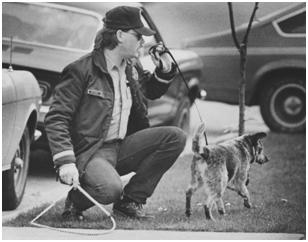 Many years ago I was privileged to train the finest and hardest working dog catcher on the planet. She had all the markings of a fine officer. She was young, enthusiastic, agile and seemed to have an instinctive grasp of canine behavior. She could catch dogs that were thought to be “uncatchable”, stand up to threatening canines and win the heart of the most antagonistic citizen, all in the same morning. Her name was Megan.
Many years ago I was privileged to train the finest and hardest working dog catcher on the planet. She had all the markings of a fine officer. She was young, enthusiastic, agile and seemed to have an instinctive grasp of canine behavior. She could catch dogs that were thought to be “uncatchable”, stand up to threatening canines and win the heart of the most antagonistic citizen, all in the same morning. Her name was Megan.
Monthly Archives: May 2014
Left or Right: You make the call.

The chart above signifies something. First, you have to know that this is a standard celeration chart. The horizontal lines increase logarithmically. Meaning from the baseline to the first line is 10. From the first line to the second line is 100. Next is 1,000 and the final one is 10,000. The individual human in this study is doing an undesired behavior, such as self-injury, up to 100 times a day. More than 5 per hour. The left side of the chart shows the use of positive methods to control the behavior. (That is the meaning of “positive programming” in this example.) The chart below shows the full cumulative record after a change in treatment. It shows a dramatic drop in the behavior. What was the change? The introduction of contingent punishment in the form of skin-shock. Meaning if you do X (pound your eyes) you will be shocked. If you do not do X you will not be shocked. Continue reading
Faster isn’t better…or is it?
In the litany of illogical excuses to ban and condemn punishment one is especially ludicrous and most often deceitful and malicious. That rule is “faster isn’t better”. This is usually stated in the context that people who use punishment use it as a short-cut, because it’s easier. Then it is stated that positive methods are “better” somehow because they take longer. Continue reading
Why is the tone-first important when using an e-collar to stop a behavior?
A special thanks to Tyler Muto for inspiring this post. It’s a work in progress, but I realized that I needed to get started explaining this important topic even if it wasn’t perfect yet – Gary Wilkes.
Dog learns how to react to aversive events in general, whether you structure the process or not. However, a trainer’s job is to create structure that facilitates learning. To teach inhibitions, electric shock collars are the only tool that can apply aversive control away from the trainer and/or in what the dog thinks is the absence of the trainer. The dog’s question is always going to be “why did I get zapped?” Continue reading
